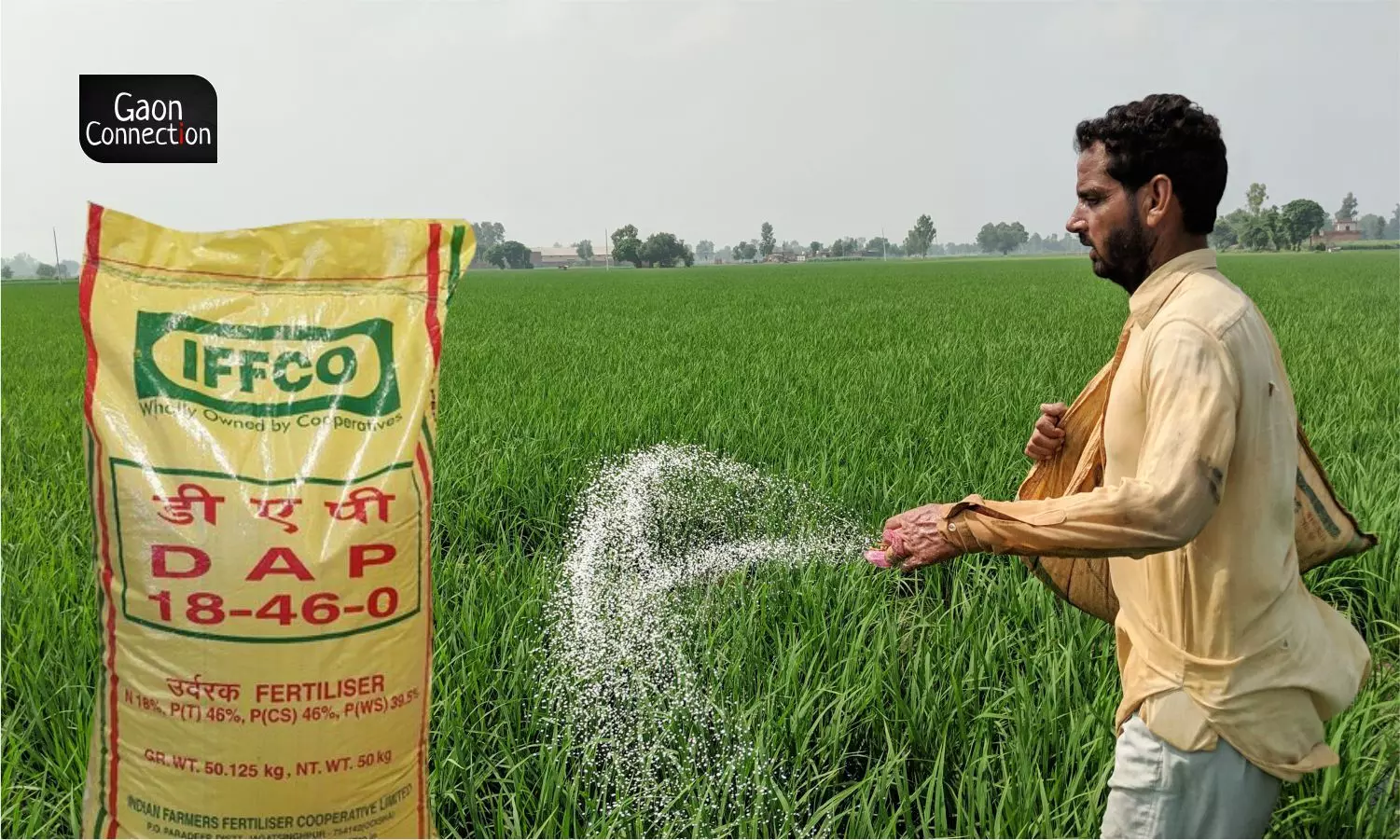Ukraine war effect — Costlier natural gas to raise India's expense on fertiliser subsidy, finds study
Like edible oils, India is also dependent on the import of chemical fertilisers which are vital for the country's food production. Natural gas is the primary component used in manufacturing these fertilisers and Russia which is waging a war in Ukraine is the biggest exporter of liquefied natural gas (LNG) which means the subsidised prices at which the Indian farmers buy these fertilisers will shoot Indian government's expenses.
 गाँव कनेक्शन 19 March 2022 1:46 PM GMT
गाँव कनेक्शन 19 March 2022 1:46 PM GMT

According to a study conducted by a United States-based non-profit organisation, the war in Ukraine is set to skyrocket Indian government's expense on the subsidies it provides to the farmers in the country.
When the Union Finance Ministry announced the Budget for the 2022-23 fiscal year on February 1, it allocated a sum of Rs 105262.23 crores for providing fertilisers at subsidised prices. The entire calculation for the budgetary allocation was based on the existing prices of the fertilisers in the world market. As liquefied natural gas (LNG) is a major raw material used for the production of fertilisers, an increase in its prices by more than 200 per cent is sending shockwaves to the policymakers in India.
"Russia is a major producer and exporter of fertiliser and supply disruptions due to the war are driving up fertiliser prices globally. This will further increase the subsidy outlay for India," Purva Jain, co-author of the study titled LNG in India's Fertiliser Sector: A Trillion-Rupee Subsidy Burden High and Volatile LNG Prices Driving Ballooning Fertiliser Subsidy was quoted in the press statement.
Also Read: Rural population faces a pinch with the sharp rise in edible oil prices and food inflation
The study which was conducted by the Ohio-based Institute for Energy Economics and Financial Analysis noted that natural gas is the main input (70 per cent) for urea production, and even as global gas prices increased 200 per cent from US$8.21/ MMBtu (metric million British thermal unit) in January 2021 to US$24.71/MMBtu in January 2022, urea continued to be provided to the agriculture sector at a uniform statutory notified price, which led to an increased subsidy.
"Global gas and fertiliser prices have reached a record high due to the war. This could lead to a much higher subsidy requirement for FY2022/23. The gas futures are US$55/MMBtu (metric million British thermal unit), which is close to the record prices reached in 2021," the study stated.
The study added that this does not bode well for the fertiliser sector as the use of LNG, in the form of imported Re-gasified LNG (R-LNG), has been increasing rapidly.
"In FY 2020/21, the use of R-LNG was as high as 63% of the total gas consumption in the fertiliser sector. Owing to limited domestic gas production and the limited allocation of domestic gas to the fertiliser (urea) sector, the incremental consumption of gas in the sector has come from imported LNG," it stated.
The way forward
The study highlighted that the growing government fertiliser subsidies are increasing India's already excessive reliance on fossil fuel imports.
"To meet the current urea requirement of 60MT from indigenous sources, the government should make fertiliser a top priority for domestic gas allocation. Moreover, a policy reset would be timely in light of the emerging opportunities for zero-emissions, domestically manufactured alternatives," the study suggested.
"Green ammonia – produced using green hydrogen from water electrolysis powered by renewable energy – is expected to become increasingly cost-competitive this decade. Development of green ammonia production at scale is critical to decarbonise the fertiliser sector and to reduce India's reliance on imported LNG, especially with the spot gas prices forecast to remain above US$50/MMBtu3 for most of 2022, which would result in yet another high subsidy outgo for the fertiliser sector," it added.
Ukraine #fertilisers #agriculture
More Stories




